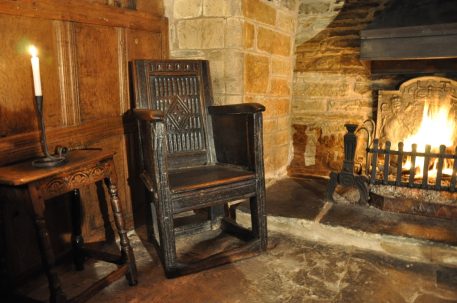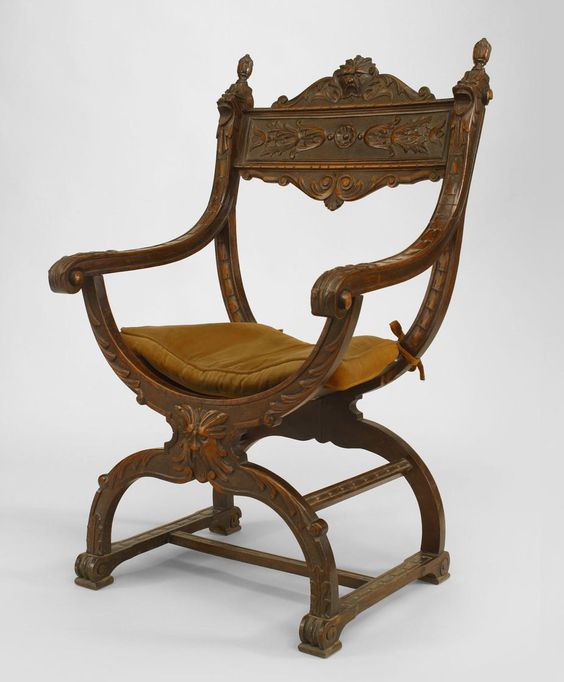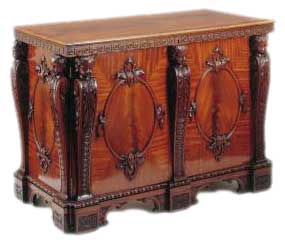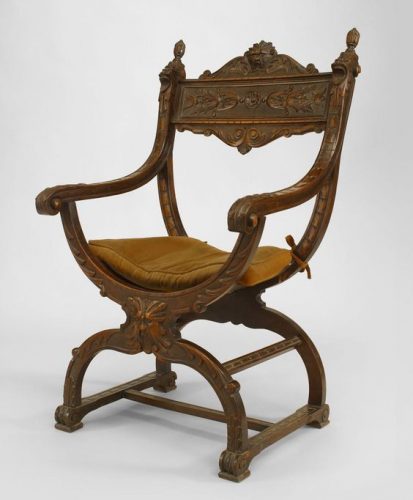A Brief Guide To The History Of Furniture

The role of furniture in our lives extends far beyond the purely practical. The shape and colour of our furniture, like other aspects of our indoor environments, influences our moods, perceptions, and ideas. Just as we design our living spaces, they in turn help to create us.
Throughout history, trends in furniture design have interwoven and evolved with our development as a civilization. As such, when we look back at the dominant eras of furniture, we see more than just aesthetically pleasing objects: We see the materials we had access to and the advancements in technology that drove us forward. We see echoes of the artistic movements that were giving life to revolutionary new ideas and propelling social change. Furniture can be considered the vessel through which technology, art, and the functional aspects of living were conjoined. We can, in short, learn a lot from looking back on the history of furniture.
A Guide To The Predominant Ages Of Furniture
The Age Of Oak
The Age of Oak is best expressed by the opulent yet strong and upright oak furniture used in the homes of the British Tudor monarchs (Henry VIII, Elizabeth I, etc.) As a material, oak was enduring in its popularity; this period therefore lasted 160 years (starting around the year 1500).
In addition to the use of oak, Age of Oak furniture can be recognised by its Gothic styling, international influences, and often intricate carving. Many of the advancements in design during this period can be indirectly attributed to Henry VIII, who invited a number of craftsmen to the UK from Spain, Italy, and the Netherlands. Under his sponsorship, they were able to spur a renewed interest in classical forms. The carving work on Age of Oak furniture often contains fruit and floral designs, bas-relief figure carvings, leaves, and armorial motifs.
Contrasting this attention to detail was the sheer size of much of this era’s history of furniture. In the Age of Oak, bigger was widely considered to be better. This period’s ‘signature pieces’ include objects like massive four-poster beds, long rectangular tables and benches, joined frame-and-panel chests, and high-backed wainscot chairs.
While the Age of Oak overlapped with the Age of Walnut, the early Colonial period of the United States (1620–1750) exerted a strong influence on the history of furniture, and furniture design. In addition to bringing with them sturdy pieces of heavily carved European furniture, early settlers began making simpler renditions out of local materials. Within the Spanish southwest, this led to the creation of a distinct furniture style that is still in use today: Mission, or Southwestern, style.
The Age Of Walnut
 The Age of Walnut is less distinct in style than the Age of Oak. The term is largely used to denote the period from roughly from 1600 to 1730 when walnut was gradually introduced as a furniture material in Europe. It is believed that improvements in sawing technology permitted this change: As craftsmen became able to saw panels thinner than an inch, types of wood that provided striking colour contrast were increasingly employed as decoration. Walnut was therefore frequently inlaid or veneered upon oak. This set in motion a transition away from elaborately carved surfaces as carving was no longer the sole means of setting a piece of furniture apart as being luxurious.
The Age of Walnut is less distinct in style than the Age of Oak. The term is largely used to denote the period from roughly from 1600 to 1730 when walnut was gradually introduced as a furniture material in Europe. It is believed that improvements in sawing technology permitted this change: As craftsmen became able to saw panels thinner than an inch, types of wood that provided striking colour contrast were increasingly employed as decoration. Walnut was therefore frequently inlaid or veneered upon oak. This set in motion a transition away from elaborately carved surfaces as carving was no longer the sole means of setting a piece of furniture apart as being luxurious.
Age Of Mahogany And Satinwood
As the French and Spanish established colonies in the New World, the mahogany trade began to flourish in earnest. From approximately 1750 onward, mahogany therefore became the predominant species used to craft furniture. Mahogany was also joined by satinwood in the latter part of the 18th century.
The Age of Mahogany and Satinwood is remarkable in its contrasts. Not only were the materials used to craft furniture suddenly different, designs fluctuated rapidly as well. In the beginning of the period, furniture styles were dramatically simplified; ornamentation was stripped away to allow for a focus on form. The result was an elegant, if rather austere, aesthetic that championed the use of flowing lines.

The nobility did not, however, embrace such minimalism for long. By the end of the 18th century, heavier carving was once again back in fashion, along with the additions of fretting and ‘cabriole’ legs. This second feature, which later became the hallmark of this period, grew wonderfully whimsical in nature: Lion’s foot designs (along with other paws) and ball-and-claw carving work were frequently utilised.
Furniture styles began to diversify and become more distinctly individual in the 18th century. Iconic history of furniture styles like Queen Anne, Georgian, William and Mary, Chippendale, Hepplewhite, Sheraton, Adam, Regency, Federal, and Empire all have their origins in the 18th century. Classical styling also made a comeback thanks to the influence of the Adelphi architects. Many of these styles would be heavily emulated in the form of various “revivals” in the coming 19th century, when mass production made it easy and inexpensive to produce copycat works.
The Modern Era
The 20th century saw a veritable explosion in furniture styles as available materials proliferated and trends in fashion and design became even more distinct. It is difficult to pick any particular style that personifies the modern period: Art Nouveau, Art Deco, Bauhaus, Modern, and Post-modern furniture show a remarkable versatility in form, materials, and motifs. Many furniture historians therefore feel that, rather than studying modern furniture as a singular entity, we should examine each of these movements in their own right. If you would like to investigate further, feel free to enjoy the following articles here on Boha Glass:

